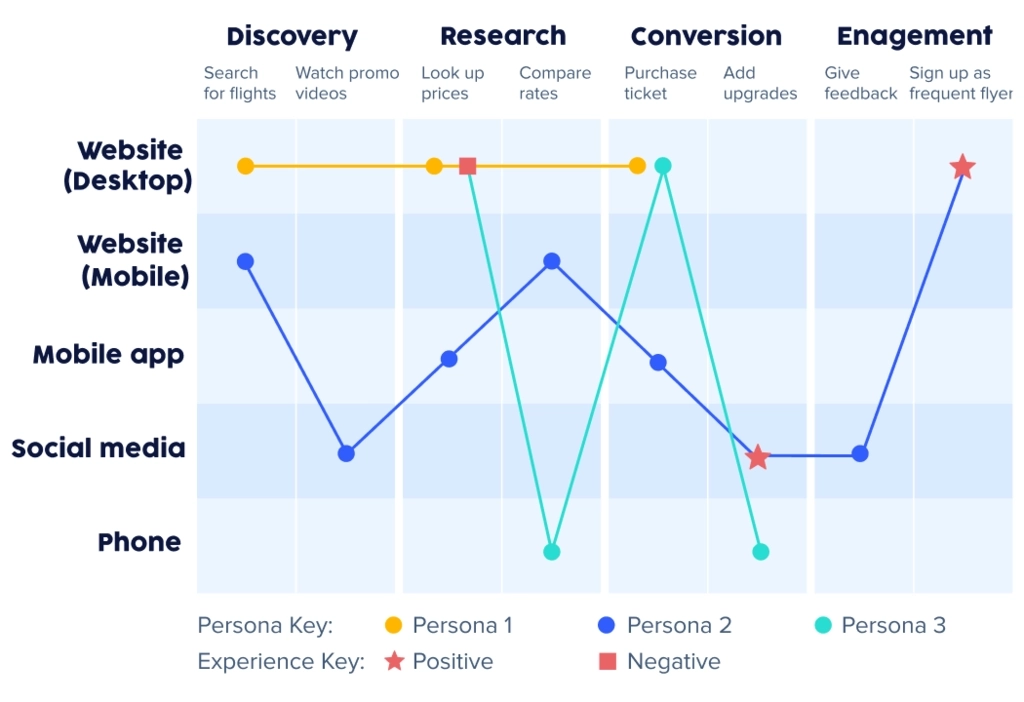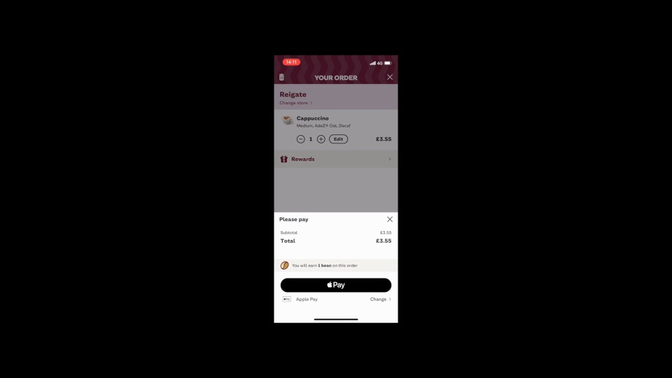
How to build a business case for user feedback

User feedback is a top organizational priority for more and more companies. 76% of executive leaders see customer experience (CX) as critical to meeting their goals, according to a Gartner survey.
Yet, as much as organizations talk about customer experience, there’s a gap between the vision and the experience delivery. Even though leaders recognize the importance of customer experience, only 44% will increase their CX investments in 2023, according to research.
So what’s stopping companies from investing in customer experience?
For one, many executives are reluctant because they find it difficult to project the ROI of these improvements, despite evidence that CX has a tangible return on revenue, customer loyalty, and even stock performance.
Secondly, improving an organization’s CX requires a cultural shift. While each employee must feel a sense of ownership over the customer experience, many organizations lack a department or an executive who owns the CX with an established process or budget for CX improvements.
In this article, we’ll lay out a plan for anyone, from startup founders to product and design team leads, and everyone in-between, to change how their organizations (or investors) view customer experience (CX) insight and user feedback. You’ll learn to see where your organization stands today, develop support for continuous user feedback, and report on your progress.
Identify your customer experience and map a plan
1. Ask questions to illuminate your customer experience maturity level
The first step in making a real change in your organization’s approach to CX is establishing where you are. The foundations of great experiences are the products and services that address the needs of your customers. Understanding your customer and their changing expectations is essential to survival. And building up your CX maturity takes time and hard work.
ON-DEMAND WEBINAR
Unlock higher conversions: understanding what users really want
In this webinar, you'll learn:
- How to identify hidden friction points that are preventing conversions
- Why traditional analytics fall short—and how customer insights fill the gap
- Actionable strategies to refine navigation, optimize CTAs, and enhance the user journey
71% of organizations classify themselves at the beginning levels (1 and 2 out of 5) of the Gartner CX maturity model. So, you’re not alone if this is the beginning of your CX journey.
To get a sense of your maturity level. Start by listing the various methods of CX insight that your organization collects. This could include customer satisfaction survey responses, Net Promoter Score, support desk emails, help chat transcripts, insight from various quantitative or qualitative methods, or any source of customer feedback your organization collects.
When it comes to understanding your customers, here are some questions that Gartner suggests asking:
- How can executive leaders discover and anticipate customers’ needs?
- How can executive leaders require the use of the voice of the customer and customer research and analytics throughout the organization?
- What high-impact forces affect customers’ wants, needs, and behaviors?
- How are the rapidly shifting numbers of digital interactions and touchpoints affecting customer expectations?
- What customer-focused innovations can executive leaders drive to differentiate an organization from its competitors?
Your answers to the previous two questions can give you an indication of where your organization currently stands in its CX maturity level. If you have trouble answering these questions or if it’s unclear who would know the answer to this, it’s time to start developing a business case for CX insight.
2. Determine your maturity level
Once you’ve answered the questions in Step 1, consider the following CX maturity stages to get a sense of where your organization currently fits.
STAGE ONE: Research is conducted on ad-hoc projects, usually by one person with few resources.
STAGE TWO: A small team conducts customer experience research and improvements, but budget, support, and organizational alignment are minimal.
STAGE THREE: Customer insight is gathered by multiple teams and goes beyond identifying or resolving customer problems but uncovers ways to meet customer needs proactively. The organization can demonstrate how customer experience efforts deliver on business goals.
STAGE FOUR: Across the organization, a shared understanding of the customer exists. A leadership group drives alignment around the customer, and customer insight is widely shared.
STAGE FIVE: A customer-centric culture influences the day-to-day actions and decisions of employees at every level.
While organization size and industry can affect this, it’s most likely that your organization sits around stages 1 and 2, and you’re working on getting to stage three.
3. Map out your customer touchpoints
The next step is to map out your customer touchpoints: everything from your website to your automated emails to your phone support. How much do you already know about the experience at those points? Identify the insight you’ll need to collect to fill the knowledge gaps. What type of research will you need to do? How much will it cost?
According to Gartner, an important CX trend is to create a customer-prioritization framework to identify which customer segments are most valuable to your organization. Use the data gathered from customer interactions to identify segments more likely to convert and become loyal users.

4. Make a roadmap for customer experience improvements
Finally, make a roadmap for CX improvements based on your touchpoints. While listening to and researching customers is a good start, analysis needs to happen in real time, and action must be taken quickly by the right people. Which touchpoints currently provide a poor experience and need attention immediately? For each desired improvement, estimate on a scale of 1-10 the impact it will make on the organization and the resources it will require. Identify opportunities to achieve easy wins: improvements that will make a big impact while requiring fewer resources.
GUIDE
Boost website conversions with real user feedback
This guide is designed to help you break through these barriers by leveraging human insights.
Get organizational alignment
To turn your roadmap of CX improvements into reality, you’ll need to get buy-in from leadership and stakeholders in your organization. Stakeholders should come from diverse parts of the organization, including, but not limited to, Sales, Customer Support, Marketing, and Product.
To do so, it’s critical to relate customer experience to organizational goals—not just customer satisfaction. In most cases, you’ll be more persuasive in convincing executives if you make a case for improvements that boost revenue, increase customer retention, or align with your organization’s current business objectives.
See how Costa Coffee delivers great digital experiences for their customers.

Start by identifying a common problem across departments. Pick an easy win from your roadmap. Put together an actionable outline that suggests how this problem could be addressed. Then, meet with individuals to discuss, focusing on projected outcomes and successes as well as potential blockers.
Once you gain support for the first improvement, you can work on implementing the solution and tracking your first success, which will open the gate for future improvements. Keep a scorecard of CX insight, initiatives, and impact to demonstrate your success over time.
Your key to success is getting the right people to discuss CX at the right time. As you work on issues, you’ll be able to identify who in your organization is open to discussing CX and making progress on improvements. These individuals are your CX champions, and they may be able to help with future initiatives. Talk to them about where they want to be in the next 6 months or 12 months, referring back to the CX maturity model. Which improvements will help you get there?

Maintain oversight when no one is directly responsible for customer experience initiatives
In many companies, there aren’t many individuals with “CX” in their titles. If that’s the case, you must organize your fellow CX champions. Invite them to participate in a CX committee that meets on an ongoing basis to prioritize projects and communicate them to the organization. This team will share accountability, reporting to each other and the organization consistently.
Get executive buy-in when the budget is limited
Once you’ve achieved an easy CX win from your roadmap, share the results with your executive team. Explain the problem, the solution that was implemented, and the outcomes that were improved.
It’s crucial to tie your findings back to organizational goals, but it’s also valuable to humanize the data and bring customer stories to life. Executives rarely watch and listen to everyday customers doing everyday activities, so you can make a big impact by including quotes or video clips from customers in your presentation.
Measure your customer experience and report on your progress
One of the best ways to get the insights you will need to make improvements—and then prove their effectiveness—is to select the right tools and resources. Choose a platform that will help you understand the complete picture of your CX, including why customers form opinions, make choices, and take action.
See how Kimberly-Clark drives the best possible customer experience for its products.

Benchmark your customer experience to illustrate your progress and report to the organization on a monthly or quarterly basis. You may find it valuable to benchmark your organization’s CX against your competitors to help prioritize competitive initiatives.
According to the Gartner report mentioned earlier, capturing and sharing customer data with key stakeholders will set you up for success. Show customer marketing leaders how improved customer satisfaction increases customer referrals and loyalty program engagement. Show CFOs how a better customer experience increases profits and reduces churn. Prove to digital product owners that satisfied customers increase downloads,

Get actionable insights today
Uncover human insights that make an impact. Book a meeting with our Sales team today to learn more.








